
Characidae, the characids or characins is a family of freshwater subtropical and tropical fish, belonging to the order Characiformes. The name "characins" is the historical one, but scientists today tend to prefer "characids" to reflect their status as a by and large monophyletic group at family rank. To arrive there, this family has undergone much systematic and taxonomic change. Among those fishes that remain in the Characidae for the time being are the tetras, comprising the very similar genera Hemigrammus and Hyphessobrycon, as well as a few related forms such as the cave and neon tetras. Fish of this family are important as food and also include popular aquarium fish species.

"Sardine" and "pilchard" are common names that refer to various small, oily forage fish in the herring family Clupeidae. The term "sardine" was first used in English during the early 15th century and may come from the Mediterranean island of Sardinia, around which sardines were once abundant.

The Squaliformes are an order of sharks that includes about 126 species in seven families.

Parrotfishes are a group of about 95 fish species regarded as a family (Scaridae), or a subfamily (Scarinae) of the wrasses. With about 95 species, this group's largest species richness is in the Indo-Pacific. They are found in coral reefs, rocky coasts, and seagrass beds, and can play a significant role in bioerosion.
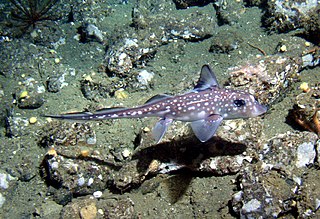
Chimaeras are cartilaginous fish in the order Chimaeriformes, known informally as ghost sharks, rat fish, spookfish, or rabbit fish; the last three names are not to be confused with rattails, Opisthoproctidae, or Siganidae, respectively.

Rasbora is a genus of fish in the family Cyprinidae. They are native to freshwater habitats in South and Southeast Asia, as well as southeast China. A single species, R. gerlachi, is only known from an old specimen that reputedly originated from Africa (Cameroon), but this locality is considered doubtful. They are small, up to 17 cm (6.7 in) long, although most species do not surpass 10 cm (4 in) and many have a dark horizontal stripe.

The prehensile-tailed porcupines or coendous are found in Central and South America. Two other formerly recognized Neotropical tree porcupine genera, Echinoprocta and Sphiggurus, have been subsumed into Coendou, since Sphiggurus was shown by genetic studies to be polyphyletic, while Echinoprocta nested within Coendou.
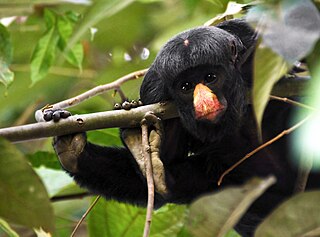
The white-nosed saki is a species of bearded saki, a type of New World monkey, endemic to the south-central Amazon rainforest in Brazil and possibly a small area east of Bolivia. Both its scientific and common name were caused by the authors working from dead specimens, where the skin on and around the nose fades to whitish. In living individuals, it is actually bright pink, and the pelage is black. No other species of the genus Chiropotes have a brightly colored nose.
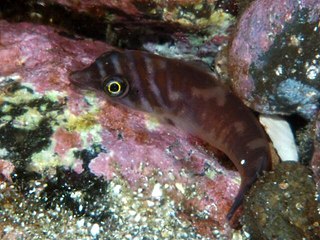
Clingfishes are fishes of the family Gobiesocidae, the only family in the order Gobiesociformes. These fairly small to very small fishes are widespread in tropical and temperate regions, mostly near the coast, but a few species in deeper seas or fresh water. Most species shelter in shallow reefs or seagrass beds, clinging to rocks, algae and seagrass leaves with their sucking disc, a structure on their chest.
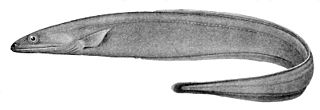
Synaphobranchus is a genus of eels in the cutthroat eel family, Synaphobranchidae. It currently contains the following species:
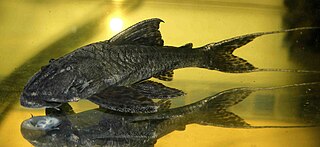
Hemiancistrus is a genus of suckermouth armored catfishes. These species are native to South America. The taxonomy of this genus is complex and unclear, and major work has to be done. Many of these fish are popular aquarium fish.
Hisonotus is a genus of armored catfishes native to South America. Species of Hisonotus and Curculionichthys are the only representatives of the subfamily Otothyrinae having serrae on the posterior edge of the pectoral fin spine. These species are small fishes, generally found in small fast flowing streams, where they grasp to the branches and leaves of aquatic or subaquatic plants. The species of this genus mostly occur in Atlantic coastal streams of southern Brazil and the Paraguay-Paraná system of southern South America. They are also distributed in the Río de La Plata basin and coastal rivers of southeastern Brazil.

Rhynchoconger is a genus of eels in the family Congridae.
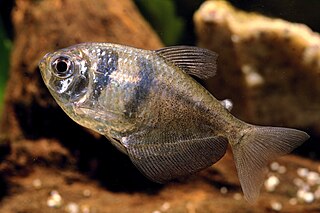
Gymnocorymbus is a genus of small characins from the Amazon, Paraguay, Orinoco, Courantyne, Gurupí and Parnaíba river basins in South America. These tetras are popular in the aquarium trade.

Characidium is a genus of fish in the family Crenuchidae. They are mainly found in South America, but C. marshi is from Panama. They are small, slender fish that live on the bottom in flowing fresh waters and feed on small animals such as insects.
Curimatopsis is a genus of small South American fish in the family Curimatidae. They are native to freshwater habitats in the Amazon, Orinoco and Paraguay basins, as well as river of the Guianas.

Chiasmodon is a genus of snaketooth fishes.

Dysalotus is a genus of fish in the family Chiasmodontidae found in the Atlantic, Indian and Pacific Ocean.

Pseudoscopelus is a genus of snaketooth fishes.
Melvius is a genus of vidalamiin amiid fish from the Late Cretaceous. The type species, Melvius thomasi, was described by Bryant in 1987. A second species Melvius chauliodous, was named and described by Hall and Wolburg in 1989, and it is now considered to be one of the index taxa of the Kirtlandian land-vertebrate age.

















